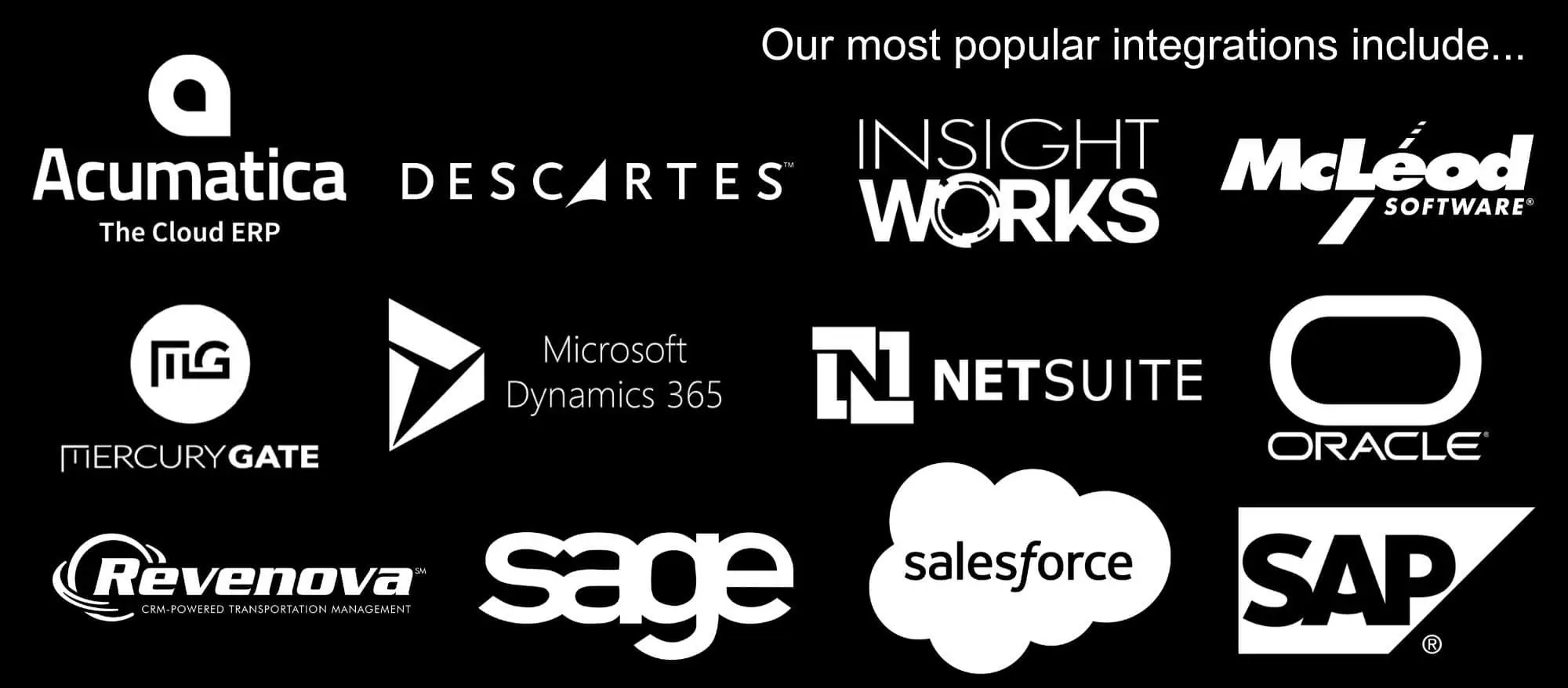- Open FAQ
- What is a shipping API?
A shipping API is an Application Programming Interface that allows businesses to integrate shipping functionalities directly into their websites, applications, or e-commerce platforms. A shipping API connects the business’s system to various shipping carriers' systems and enables seamless automation and interaction for shipping-related tasks. The main purpose of a shipping API is to simplify and streamline the shipping process, from rate calculation to package tracking.
Key features of a shipping API typically include:
- Real-time rate calculation: Fetch shipping rates from multiple carriers based on package dimensions, weight, origin, and destination.
- Label generation: Create and print shipping labels with the carrier's specifications.
- Order tracking: Obtain real-time tracking updates and shipment status for customer transparency.
- Address validation: Ensure that the provided shipping addresses are accurate and complete to reduce delivery errors.
- Carrier selection: Compare services from multiple carriers and choose the most suitable one based on cost, speed, or other criteria.
- Shipment creation: Automate the process of booking shipments with a carrier.
- Customs and international shipping support: Facilitate the handling of required customs documentation for international shipments.
- Delivery confirmation: Receive notifications once a package has been successfully delivered.
These APIs enable businesses to enhance their logistics capabilities, improve operational efficiency, and provide a better shipping experience for their customers.
- What is API connectivity?
API connectivity refers to the ability to establish a communication link between different software applications or systems through an Application Programming Interface (API). This connectivity allows data and functions to be shared and accessed seamlessly, enabling applications to interact with each other and leverage each other's functionalities.
API connectivity is essential for integrating various services and components within software ecosystems. It enables applications to send and receive requests and responses for various operations, such as retrieving data, performing transactions, or executing complex processes.
Key Points About API Connectivity:
- Interoperability: It allows different software systems to work together, even if they are built using different technologies or languages.
- Data Exchange: APIs facilitate the secure and standardized exchange of data between systems, whether within a company (internal APIs) or with external partners and services (external APIs).
- Automation: API connectivity is crucial for automating workflows by enabling applications to trigger processes in other systems without manual intervention.
- Third-party Integrations: Many services and applications use API connectivity to integrate third-party services, such as payment gateways, social media platforms, or cloud services.
- Scalability: APIs make it easier to scale applications by connecting to other services that can handle specific tasks, such as databases, cloud storage, or machine learning models.
- Real-time Communication: APIs can facilitate real-time data transfer and communication between systems, which is important for applications that require immediate updates (e.g., financial trading apps, live tracking systems).
Example of API Connectivity in Action:
Imagine an e-commerce website that needs to process payments, track shipments, and send automated email confirmations. This site would use API connectivity to:
- Connect to a payment gateway's API to process customer payments.
- Use a shipping carrier's API to generate shipping labels and track packages.
- Connect to an email service API to send out order confirmations and shipping notifications.
Overall, API connectivity plays a fundamental role in building connected, scalable, and feature-rich applications that can access and interact with various services efficiently.
- What is carrier connectivity?
Carrier connectivity refers to the seamless integration and communication between a business's systems (such as e-commerce platforms, warehouse management systems, or logistics software) and shipping carriers. This connectivity allows businesses to access and utilize the services provided by these carriers, such as shipping rate calculations, label generation, tracking updates, and scheduling pickups, directly from their own platforms.
Key Aspects of Carrier Connectivity:
- API Integration: Carrier connectivity is often established using carrier APIs, which enable real-time communication between a business’s system and the carrier’s platform for various shipping operations.
- Shipping Automation: By connecting to carriers, businesses can automate key shipping processes such as creating shipping labels, updating order statuses, and generating shipping documentation.
- Multi-carrier Management: Carrier connectivity allows businesses to access multiple carriers and compare rates, services, and delivery options to choose the most suitable one for each shipment.
- Tracking and Updates: It provides businesses and customers with real-time tracking information and delivery updates, enhancing transparency and customer experience.
- Address Validation: Some carrier connectivity solutions offer address verification to ensure accurate and deliverable addresses, minimizing delivery errors and costs.
- Customs and Documentation: For international shipping, carrier connectivity facilitates the generation and management of customs forms and required documentation, streamlining cross-border logistics.
Benefits of Carrier Connectivity:
- Efficiency: Reduces the time and manual effort required to manage shipments, resulting in faster order processing and fulfillment.
- Cost Savings: Enables businesses to compare shipping rates across multiple carriers to find the most cost-effective options.
- Customer Satisfaction: Real-time tracking and prompt delivery updates improve the overall customer experience.
- Scalability: Supports businesses as they grow and handle higher shipping volumes without significantly increasing operational complexity.
- Error Reduction: Automates processes and checks, minimizing manual entry errors related to shipments.
How Carrier Connectivity Works:
A business might integrate with carrier services through:
- Direct Carrier APIs: Connecting directly to the APIs provided by individual carriers for full access to their features.
- Third-party Platforms: Using platforms like that provide an aggregated connection to multiple carriers, simplifying multi-carrier management.
Example Scenario:
An online retailer connects their e-commerce platform to various shipping carriers using carrier connectivity. When a customer places an order:
- The platform calculates real-time shipping rates by communicating with the carrier APIs.
- The chosen carrier's API is used to create and print the shipping label.
- Tracking details from the carrier are automatically updated and sent to the customer.
- The retailer can also schedule a pickup with the carrier through the connected system.
In summary, carrier connectivity helps businesses integrate and manage shipping carrier services directly from their platforms, enhancing efficiency, cost management and customer satisfaction.
- What is API in trucking?
In the context of trucking, an API (Application Programming Interface) is a tool that allows different software systems to communicate and exchange data related to trucking and logistics. Trucking APIs facilitate seamless integration between various platforms such as freight brokers, shippers, trucking companies, transportation management systems (TMS), and third-party logistics providers (3PLs). This connectivity streamlines operations, improves efficiency and enhances the overall user experience in the trucking industry.
Key Uses of APIs in Trucking:
- Load Matching: APIs can connect shippers or freight brokers with trucking companies to find available trucks that match load requirements, helping optimize the use of trucking resources.
- Tracking and Visibility: Real-time tracking APIs allow for the monitoring of truck locations and the status of shipments. This provides shippers and customers with up-to-date information on where their freight is and estimated delivery times.
- Rate and Cost Calculations: APIs can be used to access freight rates, enabling shippers and logistics companies to compare prices and find the most cost-effective options for moving goods.
- Freight Booking: APIs enable direct booking of loads and coordination between shippers and carriers, automating the process of securing transport for freight.
- Document Management: APIs can facilitate the transfer of important documents such as bills of lading, proof of delivery (POD), and other shipping documents between systems.
- Route Optimization: Trucking APIs can be used to plan the most efficient routes, taking into account factors like distance, road conditions, traffic, and delivery schedules to minimize travel time and fuel costs.
- Compliance and Safety: Some trucking APIs provide data to ensure compliance with regulations such as hours-of-service (HOS) tracking for drivers or electronic logging device (ELD) integration.
- Fleet Management: APIs help trucking companies manage their fleet by providing data on vehicle status, maintenance needs, fuel usage, and driver performance.
Examples of Trucking APIs:
- Load Boards and Marketplaces: Platforms offer APIs that connect brokers and carriers for load matching and rate searching.
- TMS Integrations: Transportation Management Systems often integrate with trucking APIs to streamline operations, automate dispatching, and provide full visibility into the supply chain.
- Tracking Solutions: APIs from telematics providers or GPS tracking systems offer real-time location data and insights on vehicle performance.
- Freight Rate APIs: These APIs provide up-to-date pricing and allow logistics companies to manage freight quotes dynamically.
Benefits of Trucking APIs:
- Operational Efficiency: Automates various processes, reducing the need for manual data entry and minimizing human errors.
- Enhanced Visibility: Provides real-time insights into shipments, increasing transparency and allowing for proactive decision-making.
- Improved Customer Service: Ensures that shippers and customers are informed about the status of their deliveries and can access information quickly.
- Scalability: Supports the expansion of trucking operations without significant increases in administrative overhead.
- Cost Savings: By enabling better rate comparisons and optimizing routes, trucking APIs can help reduce transportation costs.
Example Scenario:
A logistics company integrates a trucking API into its TMS. When a shipment is ready, the API can automatically:
- Find available carriers that match the load's requirements.
- Book the load with a preferred carrier and generate the necessary documentation.
- Track the shipment in real-time and provide updates to customers.
- Capture proof of delivery and update the system when the delivery is complete.
In summary, APIs in trucking provide essential connectivity and automation between different stakeholders in the trucking and logistics industry, improving efficiency, communication, and service quality.
Comprehensive Freight Connectivity
Whether you’re shipping full Truckloads, smaller Parcels or even last-minute, expedited deliveries, LIVE Connect has the carrier network to support your shipping needs.

Truckload (TL)
Increase efficiency with predictive pricing, auto-rating and load board access.

Less-Than-Truckload (LTL)
Access 3x more carriers for unmatched freight connectivity.

Final Mile/Expedited
Simplify last-mile deliveries with access to more than 10,000 drivers.

Parcel
Manage domestic and international packages with 98% market coverage.
Real-Time Data Connectivity for Smarter Decisions
LIVE Connect integrates directly into existing ERP systems providing real-time updates and seamless data connectivity for all your shipments.
Powerful Tools to Enhance Your Logistics API
LIVE Connect simplifies shipping with these advanced features:
Multi-Mode Rating
Gain unmatched versatility by retrieving and comparing rates from OTR carriers.
- API integration
- Load boards for spot market access
- Rate tables for consistent pricing
- Spot quote options for on-demand needs
Tracking & Visibility
Achieve real-time tracking and visibility for every stage of your delivery cycle, ensuring timely updates and transparency.
- “In Transit” updates for current location tracking
- “Out for Delivery” notifications to monitor shipment status
- “Delivery Confirmations” to complete the cycle
EDI File Access and Normalization
Seamlessly manage your data with EDI file access that includes normalization and transmission capabilities.
- EDI 204 for load tendering
- EDI 210 for invoicing
- EDI 214 for shipment tracking
- EDI 990 for dispatching acceptance
Document Generation and Retrieval
Simplify logistics with the ability to generate, submit and retrieve essential shipping documents.
- BOL (Bill of Lading)
- Invoices for billing accuracy
- POD (Proof of Delivery) for transaction confirmation
- Shipping labels to facilitate operations
Push Tracking
Stay informed with automated tracking updates.
- Email for convenient access
- Flat files for bulk data handling
- FTP for secure data transfer
- Webhooks for real-time system integration
Unparalleled Documentation & Support
Ensure a seamless experience backed by Banyan’s comprehensive resources.
- Clean API documentation for streamlined integration
- Experienced Solution Engineers for technical guidance
- Dedicated Onboarding Specialists for a smooth start
- Award-winning customer support that prioritizes your success
With LIVE Connect you get unmatched API Carrier Connectivity, reliable real-time updates and tools that simplify your logistics processes. Boost your shipping efficiency today with the most advanced carrier integration platform available!
Frequently Asked Questions
Ask our experts now. Send us a message and our team will gladly reach out to you.
Contact Us

